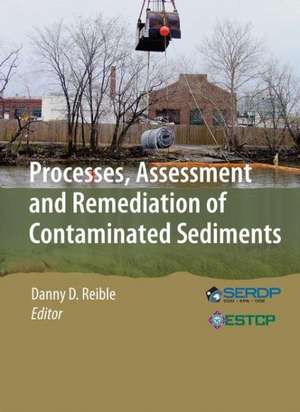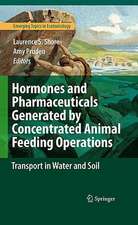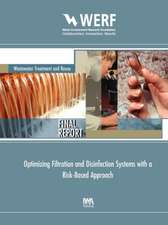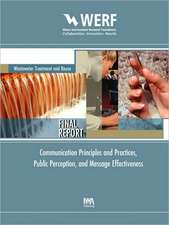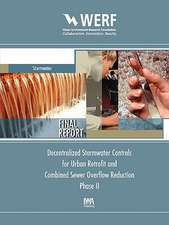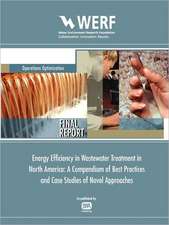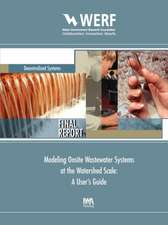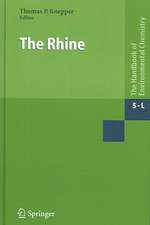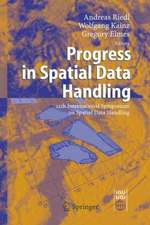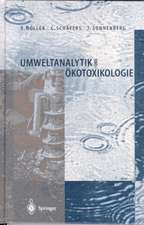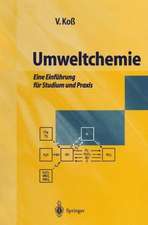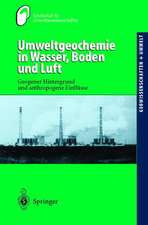Processes, Assessment and Remediation of Contaminated Sediments: SERDP ESTCP Environmental Remediation Technology, cartea 6
Editat de Danny D. Reibleen Limba Engleză Hardback – 20 iul 2013
| Toate formatele și edițiile | Preț | Express |
|---|---|---|
| Paperback (1) | 406.08 lei 38-44 zile | |
| Springer – 23 aug 2016 | 406.08 lei 38-44 zile | |
| Hardback (1) | 428.18 lei 22-36 zile | |
| Springer – 20 iul 2013 | 428.18 lei 22-36 zile |
Preț: 428.18 lei
Nou
Puncte Express: 642
Preț estimativ în valută:
81.96€ • 89.05$ • 68.89£
81.96€ • 89.05$ • 68.89£
Carte disponibilă
Livrare economică 31 martie-14 aprilie
Preluare comenzi: 021 569.72.76
Specificații
ISBN-13: 9781461467250
ISBN-10: 146146725X
Pagini: 573
Ilustrații: XL, 462 p. 104 illus., 54 illus. in color.
Dimensiuni: 193 x 260 x 27 mm
Greutate: 1.36 kg
Ediția:2014
Editura: Springer
Colecția Springer
Seria SERDP ESTCP Environmental Remediation Technology
Locul publicării:New York, NY, United States
ISBN-10: 146146725X
Pagini: 573
Ilustrații: XL, 462 p. 104 illus., 54 illus. in color.
Dimensiuni: 193 x 260 x 27 mm
Greutate: 1.36 kg
Ediția:2014
Editura: Springer
Colecția Springer
Seria SERDP ESTCP Environmental Remediation Technology
Locul publicării:New York, NY, United States
Public țintă
ResearchCuprins
Introduction.- Sediment and Contaminant Processes.- Fundamentals of Sediment Transport.- The Mechanics of Soft Cohesive Sediments During Early Diagenesis.- Advances in Risk Assessmnet in Support of Sediment Risk Management.- Assessing Biological Effects.- Assessing Bioavailability of Hydrophobic Organic Compounds (HOCs) and Heavy Metals in Sediments Using Freely Available Pore Water Concentrations.- Risk Management for Contaminated Sediments.- Monitored Natural Recovery.- In Situ Biotransformation of Contaminants in Sediments.- In Situ Treatment for Control of Hydrophobic Organic Contaminants Using Sorbent Amendment: Theoretical Assesments.- Capping for Remediation of Contaminated Sediments.- Sediment Dredging, Treatment, and Disposal.- Monitoring Remedial Effectiveness.- Contaminated Sediment Research and Development Needs.- Index.
Textul de pe ultima copertă
The purpose of this volume, Processes, Assessment and Remediation of Contaminated Sediment, is to help engineers and scientists better understand contaminated sediment sites and identify and design remedial approaches that are more efficient and effective. Contaminated sediment management is a difficult and costly exercise that is rarely addressed with easily identified and implemented remedies. It is hoped that this book can help identify and implement management approaches that provide an optimal, if not entirely satisfactory, solution to sediment contaminant problems.
Topics addressed in this volume include:
· An introduction to contaminated sediment management that summarizes the tradeoffs between natural attenuation, containment and active removal (Chapter 1).
· A series of chapters describing key sediment processes that separate sediments from contaminated soil sites and make understanding sediment processes difficult:
An introduction to the processes that are uniquely associated with contaminated sediment sites including sediment resuspension, groundwater upwelling, hyporheic exchange and bioturbation (Chapter 2).
The current understanding of sediment erosion and transport and how these processes are modeled (Chapter 3).
A description of the physical and biological processes operative at the sediment-water interface (Chapter 4).
· A series of chapters describing sediment risk assessment approaches including:
How to design risk assessment programs to support risk management decisions (Chapter 5). The biological effects that usually define the risks that contaminants in sediments represent and the biological assays used to assess those risks (Chapter 6).
Assessing bioavailability via chemical measurements,primarily through the use of porewater concentration measurements (Chapter 7).
· A series of chapters describing sediment risk management, i.e., remedial approaches and their design, including:
Processes describing how to develop and implement risk management efforts (Chapter 8).
Each of the key approaches to managing contaminated sediments; monitored natural recovery (Chapter 9), intrinsic biotransformation and biodegradation (Chapter 10), in situ treatment via carbon amendments (Chapter 11), in situ containment via capping with either inert material or with active amendments (Chapter 12) and dredging and excavation (Chapter 13).
The design and implementation of a monitoring program to evaluate remedy performance (Chapter 14).
Each chapter in this volume has been thoroughly reviewed for technical content by one or more experts in each of the subject areas covered. The editors and chapter authors have produced a well-written and up-to-date treatise that we hope will be a useful reference for those making decisions on the assessment and remediation of contaminated sediments and for those involved in research and development of advanced technology for the assessment and remediation of sediments.
Topics addressed in this volume include:
· An introduction to contaminated sediment management that summarizes the tradeoffs between natural attenuation, containment and active removal (Chapter 1).
· A series of chapters describing key sediment processes that separate sediments from contaminated soil sites and make understanding sediment processes difficult:
An introduction to the processes that are uniquely associated with contaminated sediment sites including sediment resuspension, groundwater upwelling, hyporheic exchange and bioturbation (Chapter 2).
The current understanding of sediment erosion and transport and how these processes are modeled (Chapter 3).
A description of the physical and biological processes operative at the sediment-water interface (Chapter 4).
· A series of chapters describing sediment risk assessment approaches including:
How to design risk assessment programs to support risk management decisions (Chapter 5). The biological effects that usually define the risks that contaminants in sediments represent and the biological assays used to assess those risks (Chapter 6).
Assessing bioavailability via chemical measurements,primarily through the use of porewater concentration measurements (Chapter 7).
· A series of chapters describing sediment risk management, i.e., remedial approaches and their design, including:
Processes describing how to develop and implement risk management efforts (Chapter 8).
Each of the key approaches to managing contaminated sediments; monitored natural recovery (Chapter 9), intrinsic biotransformation and biodegradation (Chapter 10), in situ treatment via carbon amendments (Chapter 11), in situ containment via capping with either inert material or with active amendments (Chapter 12) and dredging and excavation (Chapter 13).
The design and implementation of a monitoring program to evaluate remedy performance (Chapter 14).
Each chapter in this volume has been thoroughly reviewed for technical content by one or more experts in each of the subject areas covered. The editors and chapter authors have produced a well-written and up-to-date treatise that we hope will be a useful reference for those making decisions on the assessment and remediation of contaminated sediments and for those involved in research and development of advanced technology for the assessment and remediation of sediments.
Caracteristici
Describes key sediment processes that separate sediments from contaminated soil sites This volume is useful to the technical practitioner as well as the research scientist and engineer in the field Seeks to identify key uncertainties and resulting research and development needs for the assessment and management of contaminated sediments?
